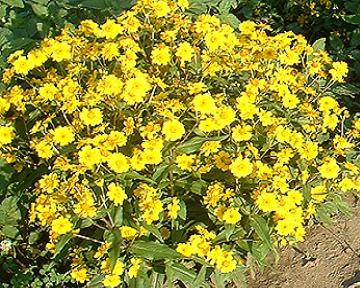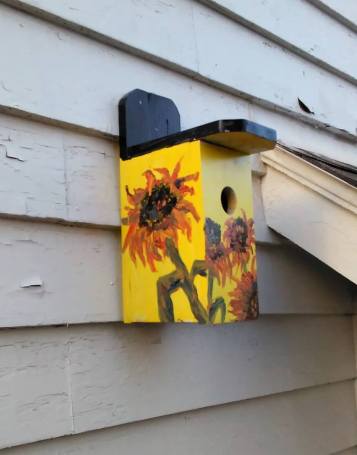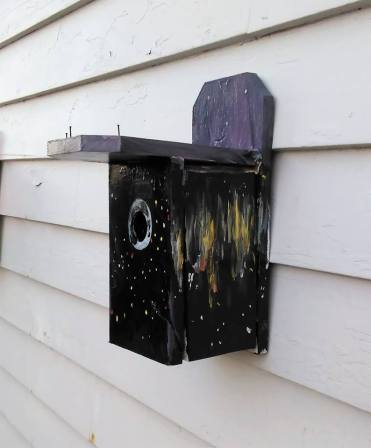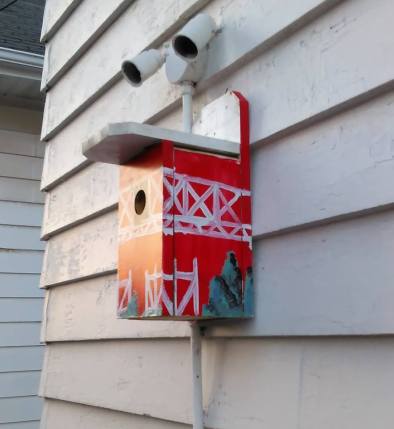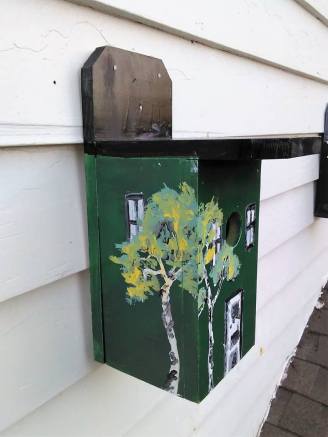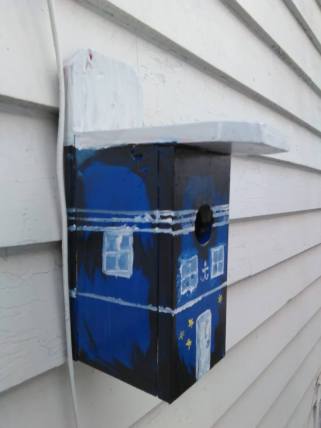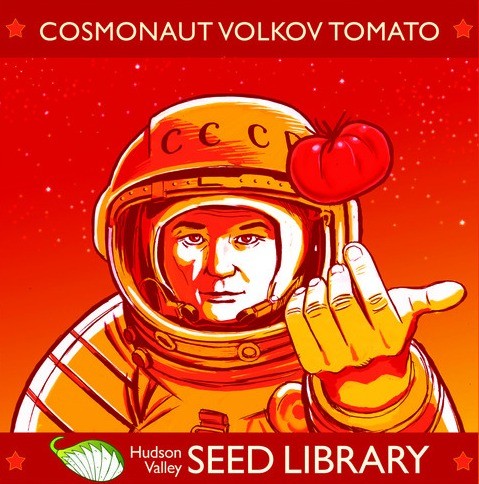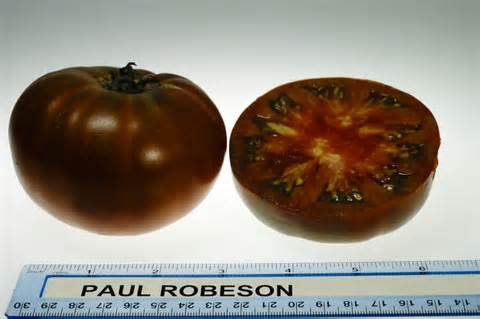Why Moths Matter and How to Attract Them to Your Garden

Why Moths Matter and How to Attract Them to Your Garden
H. Bradford
6/15/18
Last week I had the odd idea that I wanted to attract moths to my garden. The idea is only odd because usually gardeners want to rid moths from the garden. Even though it is actually a butterfly, the cabbage moth (cabbage white butterfly or small white (pieris rapae)) is the scourge of vegetable growers. Cutworms generally grow into a variety of species of moths. Tent caterpillars and gypsy moths defoliate trees. Moths get a bad wrap-taking blame for some of the damage done by their more colorful kin. But, moths are useful in a number of ways. For one, they are important pollinators of the night shift. As a night shift worker myself, I can celebrate the work of these nocturnal comrades. Moths create silky cocoons, unlike butterflies, which create chrysalis. Humans have benefited by turning the cocoons of silk moths into a textile. Finally, moths are also a source of food for humans, such as the mopane caterpillars which are farmed and eaten in parts of southern Africa. Aside from human consumption, moths are food for bats, toads, small animals (Larum, 2018) as well as owls, flying squirrels, song birds, tree frogs (“The Xerces Society » Blog Archive » Gardening For Moths”, 2017). While there are many reasons why moths are important, the main reasons why a gardener might want to attract moths to their garden is for pollination, food to other garden critters, and as a celebration of their nocturnal beauty.
((Edit Note: the heading image for this post features three moth stock images from canva. I believe the top one may not be a moth since it is not holding its wings flat. I did not catch this when I created the image))
(image from Butterfly Conservation.org)
Both moths and butterflies belong to the order of insects called Lepidoptera, though moths tend to be characterized by such things as being nocturnal, holding their wings flat, and making silky cocoons. Recent research suggests that moths and butterflies have been around for over 200 million years, appearing before the first flowering plants. Traditionally, pollinators were believed to have evolved with flowering plants. However, the discovery of fossilized wing scales has pushed the existence of moths and butterflies back into history from 130 million years to over 200 million. They were first found in the Triassic Period, which is also when the first dinosaurs also appeared. Early butterflies and moths are believed to have looked more like moths with drab colors. More colorful butterflies only evolved after the extinction of dinosaurs (Osterath, 2018). So, while moths may not get the same attention as butterflies, their characteristics reach deeper back into history. Today, they out number butterflies 10 to 1. In the United States alone, there are 11,000 species of moths. They outnumber birds and mammal species of North America combined (Konkel, 2012). 
Planting for Pollinating Moths:
As I mentioned earlier, moths are overlooked pollinators. Most studies regarding pollinators focus on diurnal pollinators like bees and butterflies. Pollinating moths do so when visiting a plant for nectar, which is used for energy, but some pollinate when visiting a plant to lay eggs. Many plants are pollinated by both diurnal and nocturnal pollinators. Research conducted on 289 species of plants which are pollinated exclusively or partially by moths, representing 75 taxa of plants found that moths are specifically helpful as pollinators because they travel further, have higher quality pollination, and greater interpopulation gene flow (Konkel, 2012). A study of moths in a Portuguese meadow showed that 76% of the moths that were captured carried pollen on them. One third of the moths had pollen from five or more plant species (Banza, Belo, and Evans 2015). Moths lack jaws, so they only drink nectar. Because moths don’t groom away or eat the pollen, they move more pollen from plants than pollinators that do (Tartaglia, 2015). Thus, moths are useful pollinators because they visit many plants, travel long distances, and don’t eat pollen.

White lined sphinx moth from http://www.nhptv.org/wild/sphingida.asp
Most moths are generalists, meaning they don’t require a specific plant to feed their larvae or to draw nectar from. However, there are a few plants such as Western prairie fringed orchid and senita cacti which depend exclusively on moths for pollination (Young, Auer, Ormes, Rapacciuolo, Schweitzer, and Sears, 2017). Western prairie fringed orchid is a wildflower found in the Midwest, including Minnesota. The orchid is endangered in Minnesota and federally listed as threatened. According to the Minnesota Department of Natural Resources, it is pollinated by “bedstraw hawk moth (Hyles gallii), the wild cherry sphinx (Sphinx drupiferarum), the Achemon sphinx (Eumorpha achemon), and the non-native spurge hawk moth (Hyles euphorbiae).” (https://www.dnr.state.mn.us/rsg/profile.html?action=elementDetail&selectedElement=PMORC1Y0S0) It would be impractical, difficult, and sometimes illegal (depending upon how the plant was obtained) to grow this particular orchid, however a gardener could grow plants which support the pollinating moth populations. For instance, wild cherry sphinx moth larvae are hosted on wild cherry, plum, apple, lilac, and hackberry bushes. Adults feed on the nectar of deep throated flowers such as Japanese honeysuckle (Wild cherry sphinx Sphinx drupiferarum, 2018). Achemon sphinx moth caterpillars enjoy grape plants and adults feed on the nectar of Japanese honeysuckle, petunias, and phlox (Achemon sphinx Eumorpha achemon, 2017). Both species are said to like Japanese honeysuckle in particular, which is non-Native plant available at nurseries. Perhaps because the flowers are white, tubular, and fragrant it is a favorite for those moths. 
Japanese Honeysuckle image from Colombia University
Senita cactus and yucca plants are also pollinated exclusively by moths. If a gardener happens to live in an area which supports yucca or cacti, growing these to attract moths might be a novel idea. However, Minnesota is not within the range of the yucca moth. There are some yucca varieties which may be cold hardy to zone five, but since the plant is only pollinated by yucca moths it doesn’t make much sense to plant them outside the range of the moth. Since most moths are generalists, there are plenty of other plants that can attract them to the garden. It is often suggested that gardeners plant pale colored flowers so that moths can see them at night. Though I am not sure if this is scientifically proven, and may be more useful in helping humans see both the moths and flowers in the dark. It is also often advised that moth attracting flowers should be fragrant at night. Moth attracting flowers include dianthus, red valerian, campion, soapwort, wild honeysuckle, Sweet William, evening primrose, clematis, and flowering tobacco (Carlton, 2015) Heather, lavender, jasmine, mandevilla, madonna lily, phlox, heliotrope, gardenian, butterfly bush, and spider flower are also popular with moths (Miller, 2009) In Minnesota, four-o-clocks, petunia, fireweed, dwarf blue gentian, dame’s rocket, madonna lily, scarlet bergamot, common bergamot, and weigelia can be grown to attract adult moths and were rated as excellent by Carol Henderson for attracting wildlife (Krischik, 2013).

Tobacco hornworm moth from https://phys.org/news/2009-03-moths-key-scent.html
Although it may seem unconventional, reserving some vegetables for moths or larvae, also would draw moths to the garden. For instance, tomato hornworms grown into attractive, Five spotted hawk moths (Moth Pollination, n.d.). Hawk moths pollinate tubular plants like honeysuckle, datura, brugmansias. (Thompson, 2015). They belong to the family Sphingidae, which also includes include sphinx moths. Larger species of these moths, such as the white lined sphinx moth, are sometimes mistaken for hummingbirds, and like hummingbirds they are active in the day (or at least some are) and like large, nectar filled blooms. As a general rule, flowers that butterflies like tend to also be liked by moths. Light colored, tubular, fragrant, night blooming flowers are also attractive to moths and make for a nice night garden.
Beautiful Moths:
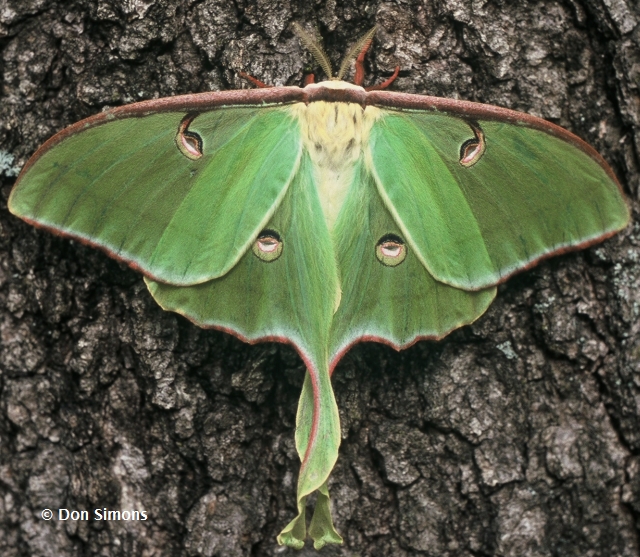
Luna moth from https://www.butterfliesandmoths.org/species/Actias-luna
In addition to attracting adult moths, gardeners can consider attracting moth caterpillars to their garden. For instance, one of the most stunning moths of Minnesota is the pistachio green Luna moth. However, Luna moths are among the moths that lack functioning mouths. Thus, a gardener must consider the needs of caterpillars, which eat the leaves of American beech, willow, White oak, Black cherry, black walnut, red maple, sumac, and other nut and fruit bearing trees (Medina, 2012). The Polyphemus moth is another stunning moth, and like the Luna moth, it is the Saturnidae family. This family consists of some of the largest moths in the world, including the Atlas moth of Asia, with a wingspan of up to almost 12 inches across. One of the largest North American moth is the Royal Walnut moth, which has a wingspan of 4.5 inches and is once again, a member of the Saturniidae family (Konkel, 2012). These moths are more commonly found in the Southern United States, and as the name suggests, the caterpillars feed on walnut and hickory foliage. Since these non-feeding moths live short lives as adults and do not visit flowers, they are not major pollinators. However, they are large, beautiful moths often with patterned markings including eye spots. Their caterpillars can also be quite large and remarkable. Planting with these moths in mind is more for beauty than function. Rather than planting vegetables or flowers, planting trees or shrubs would attract these moths. For instance, in Minnesota, the four inch Cercropia moth caterpillar feeds on cherry, linden, maple, boxelder, elm, oak, birch, willow, hawthorn, and poplar leaves. The moth can have a wingspan of up to six inches or more and it has a bright white and red stripe and eyespot (Cercopia Moth, n.d.). The smaller but also striking three and a half inch, polyphemus moth caterpillar eats the leaves of “ash, birch, maple, oak, and willow. It has also been known to eat grape leaves” (Hahn, 2005). For those who live in warmer regions and feel like trying an interesting hobby or agricultural endeavor, a gardener could attempt to raise silkworms, which once again, are part of the Saturnidae family. Silkworm larvae feed exclusively on mulberry leaves. Minnesota is at the edge of the range of red mulberries, but perhaps due to climate change the tree will expand its range. Mulberries themselves are attractive trees with bountiful, edible berries. Recently, some red mulberry trees were found growing in Southern Minnesota, but they had otherwise not been documented in the state since 1920 (Thayer, 2017). In short, a “moth garden” might include trees or shrubs that are attractive to the bold and beautiful Saturnidae family.

Polyphemus moth from http://entnemdept.ufl.edu/creatures/MISC/MOTHS/polyphemus_moth.htm
Lighting the Way:
Some online resources for attracting moths to a garden or yard suggest turning on a yard light. Anyone who has left a porch light on, knows that this draws moths in. However, I am not sure if this is the best way to attract moths to a garden. Light pollution may actually contribute to the decline of moths. Moths are attracted to shorter wavelength light, with variation across species and between sexes. For example, male moths are more attracted to light traps than females. Lights that produce heat can kill or harm moths. Artificial lights impact how females lay eggs, sometimes suppressing egg layings, altering where eggs are laid, or resulting in hyper egg laying. Lights can also confuse moth’s navigation, their eyesight, and delay nocturnal activity. Artificial lights can give advantages to some moth predators and can hinder a moth’s ability to evade bats (Macgregor, Pocock, Fox, and Evans, 2014). For instance, the tiger moth uses clicking noises to evade the sonar of bats (Konkel, 2012). One theory is that moths are confused by the light, so they behave as if it is day and bats are not around. Light also disrupts the reproduction of moths, as light disrupts female production of pheromones and male moths become distracted from following pheromone trails. When moths reproduce, artificial light impacts the size of caterpillars, causing them to be smaller (Macgregor, 2017). 
image from http://animalia-life.club/other/moths-flying-around-light.html
Because moths evolved to be active in the dark, they do not require much light to find their way. Moths actually have evolved a keen sense of smell and can follow the scent of a flower several kilometers (Tartaglia, 2015). A male giant silkworm moths can smell a female from up to seven miles away (Konkel, 2012). Moths do not smell with nostrils, but with their antennae (Tartaglia, 2015). While scientists often use light to attract moths for studies and perhaps turning the lights on from time to time to get a better peek at moths is probably alright, using lights, or at least short wavelength lights is probably not very helpful to moths. If a gardener wants to create a night garden for human enjoyment rather than moths, perhaps dim solar lights or glow in the dark garden art would be less disruptive. An even safer idea is to observe moths using red filtered light or to attract moths using smells rather than light. If a person does choose to have yard lights, avoiding blue light (which is more attractive to moths) and turning out lights or putting them on a timer can reduce the negative impact of light pollution. Finally, some moths can be attracted to the yard with smells rather than light and there are several recipes of how to create moth solutions (Macgregor, 2017). One recipe calls for 454 grams of black treacle, 1 kg of brown sugar, 500 ml of brown ale, and a paintbrush. After simmering the ale for five minutes, add the brown sugar and treacle, stirring and dissolving, then letting simmer for two more minutes. Once the mixture has cooled, it can be painted onto trees or fence posts, avoiding moss and lichen. Another recipe calls for mixing a bottle of wine with 1 kg of sugar, dissolving the sugar into the wine over heat. This mixture can be applied to cloth or ropes, which can be hung from trees or posts to attract moths (Butterfly Conservation, 2015). Recipes for moth sugaring or wine ropes can be flexible, using whatever is on hand, including old fruit such as bananas, various sorts of alcohol, sugar, molasses, maple syrup, etc. The mixture should be thick and paste like and can be applied to trees or rope (Moskowitz, 2011).

image from UNC Charlotte Urban Institute
Moth Conservation:
All pollinating insects have been in decline over recent decades, and with them, the plants that they pollinate. In Britain, ⅔ of the species of larger moths have declined over the last 40 years. Like diurnal pollinators, nocturnal pollinators like moths are challenged by climate change, use of agro chemicals, and habitat fragmentation (Konkel, 2012). In the United States, the decline of some moths can also be attributed to the introduction of the parasitoid fly between 1906–1986 to control gypsy moths. Compsilura concinnata did little to control gypsy moth populations and attacks 200 other species of moths and butterflies. Hawk moths are on of them. IIn a study by Young, Auer, Ormes, Rapacciuolo , Schweitzer , Sears (2017) one third of the species of hawk moth’s studied had declined between 1900-2012, while four species increased. Control of two of the moths as pests may have contributed to some decline in addition to the introduction of the parasitic fly.
Gardeners can support moth populations by planting trees, vegetables, and flowers that host their larvae or provide nectar to adults. Being mindful of light pollution is another way to help moths. Gardeners can also avoid pesticides. Even natural pesticides can be harmful to moths. Bacillus thuringiensis is toxic to larvae of both butterflies and moths (Miller, 2009). Gardeners can also get involved with National Moth Week, which is held the last week of July. During the week, participants can join citizen science projects to identify and count local moth populations. Participants can also host events and submit their findings to the National Moth Week website (National Moth Week, n.d.). Of course, these are mostly small scale, individual, feel good activities. To really protect moths, and all of the life on the planet, individuals must move away from backyard solutions to building social movements against climate change, the profit driven waste and destruction of industrial agriculture within capitalism, and the exploitative relationship to nature that the profit system both encourages and cannot escape. Environmental movements that mobilize all segments of society towards the overhaul of our economic system and which are given weight by the power of workers and the connections to other mass movements are the only way to challenge the large scale destruction of capitalism. Thus, while planting white flowers and learning more about moths can be a wonderful hobby, it is no substitute for the structural changes necessary for protecting habitats, changing agricultural practices while ensuring an end to poverty and hunger, and thwarting climate change. Historically, the example of the Peppered moth illustrated the impact of industrialization on the environment. I think then that aside from being a night pollinator, moths are a symbol of capitalism.

Peppered moth image from https://askabiologist.asu.edu/peppered-moths-game/kettlewell.html
Conclusion:
Moths are really fascinating. I have already begun planting with moths in mind and will be on the lookout for these overlooked garden visitors. Perhaps I’ll even try to participate in National Moth Week this July. Moths are important pollinators, far more plentiful than butterflies, some of the largest insects, misunderstood and under studied, and both economically destructive and important. At the same time, there are imperiled by habitat loss, light pollution, pesticides, and climate change. I am convinced that moths matter and are worth learning more about it. One of the tragedies of life is that most of the life around us remains anonymous, unknown and unseen. I lack the time and discipline to uncover the nature of the hidden world around me. In the night, there is a world of moths (among many other creatures). Some lack mouths and live a short time. My senses are muted by capitalism and my own life is too short to learn and do all that I wish to. Life is truncated by labor and confined by the resources of class. I like moths though. They are night workers like me.
Sources:
Achemon sphinx Eumorpha achemon (Drury, 1773). (2017, July 30). Retrieved June 15, 2018, from https://www.butterfliesandmoths.org/species/Eumorpha-achemon
Banza, P., Belo, A. D., & Evans, D. M. (2015). The structure and robustness of nocturnal Lepidopteran pollen‐transfer networks in a Biodiversity Hotspot. Insect Conservation and Diversity, 8(6), 538-546.
Butterfly Conservation. (2015, September 15). Retrieved June 15, 2018, from https://butterfly-conservation.org/3114-10110/a-recipe-for-moths-sugaring–wine-roping.html
Carlton, M. (2015, September). Flowers for Moths [PDF]. http://www.foxleas.com/uploads/files/Moth%20Flowers%202015.pdf
Cecropia moth. (n.d.). Retrieved June 15, 2018, from http://minnesotaseasons.com/Insects/cecropia_moth.html
Hahn, J. (2000, August 15). It’s a hummingbird, it’s a moth, it’s a what? Retrieved June 15, 2018, from https://www.extension.umn.edu/garden/insects/find/its-a-hummingbird-its-a-moth-its-a-what/
Hahn, J. (2005, August 15). Giant silk moth caterpillars. Retrieved June 15, 2018, from https://www.extension.umn.edu/garden/insects/find/giant-silk-moth-caterpillars/
Konkel, L. (2012, July 27). 7 Things You Don’t Know About Moths, But Should. Retrieved June 15, 2018, from https://www.livescience.com/21933-moth-week-facts.html
Krischik, V. (2013). Butterfly and moth garden plants. Retrieved June 15, 2018, from https://www.extension.umn.edu/garden/yard-garden/landscaping/butterfly-gardening/butterfly-and-moth-garden-plants/
Larum, D. (2018, April 04). Moth Gardening Information ? What Plants Attract Moths To The Garden. Retrieved June 15, 2018, from https://www.gardeningknowhow.com/garden-how-to/beneficial/attracting-moths-to-gardens.htm
Macgregor, C. J., Pocock, M. J., Fox, R., & Evans, D. M. (2014). Pollination by nocturnal Lepidoptera, and the effects of light pollution: A review. Ecological Entomology, 40(3), 187-198. doi:10.1111/een.12174
Macgregor, C. J., Evans, D. M., Fox, R., & Pocock, M. J. (2017). The dark side of street lighting: impacts on moths and evidence for the disruption of nocturnal pollen transport. Global change biology, 23(2), 697-707.
Macgregor, C. (2017, July 17). Like moths to a flame: National Moth Week, and how you can help our nighttime wildlife. Retrieved from http://darksky.org/like-moths-to-a-flame-national-moth-week-and-how-you-can-help-our-nighttime-wildlife/
Medina, M. (2012, May 20). The Gardener’s Eden. Retrieved June 15, 2018, from http://www.thegardenerseden.com/?p=26162
Miller, S. (2009, June 21). Pollinators on second shift: Moths. Retrieved from https://davesgarden.com/guides/articles/view/2510
Moth Pollination. (n.d.). Retrieved June 15, 2018, from https://www.fs.fed.us/wildflowers/pollinators/animals/moths.shtml
Moths of Minnesota. (n.d.). Retrieved June 15, 2018, from http://www.welchproperty.com/cannon/mothsof.htm
Moskowitz, D. (2011, December 28). Sugar Baits for Moths: Winter Fun. Retrieved from http://nationalmothweek.org/2011/12/28/sugar-baits-for-moths-winter-fun/
National Moth Week. (n.d.). Retrieved June 15, 2018, from http://nationalmothweek.org
Osterath, B. (2018, January 11). Rethinking evolution: Butterflies came first, flowers came second | DW | 11.01.2018. Retrieved from http://www.dw.com/en/rethinking-evolution-butterflies-came-first-flowers-came-second/a-42110188
The Xerces Society » Blog Archive » Gardening For Moths. (2017, July 21). Retrieved from https://xerces.org/2017/07/21/gardening-for-moths/
Tartaglia, E. (2015, June 25). The Year of the Sphingidae – Pollination. Retrieved June 15, 2018, from http://nationalmothweek.org/2015/06/25/the-year-of-the-sphingidae-pollination/
Thayer, S. (2017, May/June). The Rarest Tree | Minnesota Department of Natural Resources. Retrieved June 15, 2018, from https://www.dnr.state.mn.us/mcvmagazine/issues/2017/may-jun/red-mulberry.html
Thompson, K. (2015, July 21). Forget butterflies – it’s moths you need to entice to the garden. Retrieved June 15, 2018, from https://www.telegraph.co.uk/gardening/gardeningadvice/11744830/Forget-butterflies-its-moths-you-need-to-entice-to-the-garden.html
Wild cherry sphinx Sphinx drupiferarum J.E. Smith, 1797. (2018). Retrieved June 15, 2018, from https://www.butterfliesandmoths.org/species/Sphinx-drupiferarum
Young B, Auer S, Ormes M, Rapacciuolo G, Schweitzer D, Sears N (2017) Are pollinating hawk moths declining in the Northeastern United States? An analysis of collection records. PLoS ONE 12(10): e0185683. https://doi.org/10.1371/journal.pone.0185683
![2[1]](https://brokenwallsandnarratives.files.wordpress.com/2018/06/21.png?w=492&h=412)
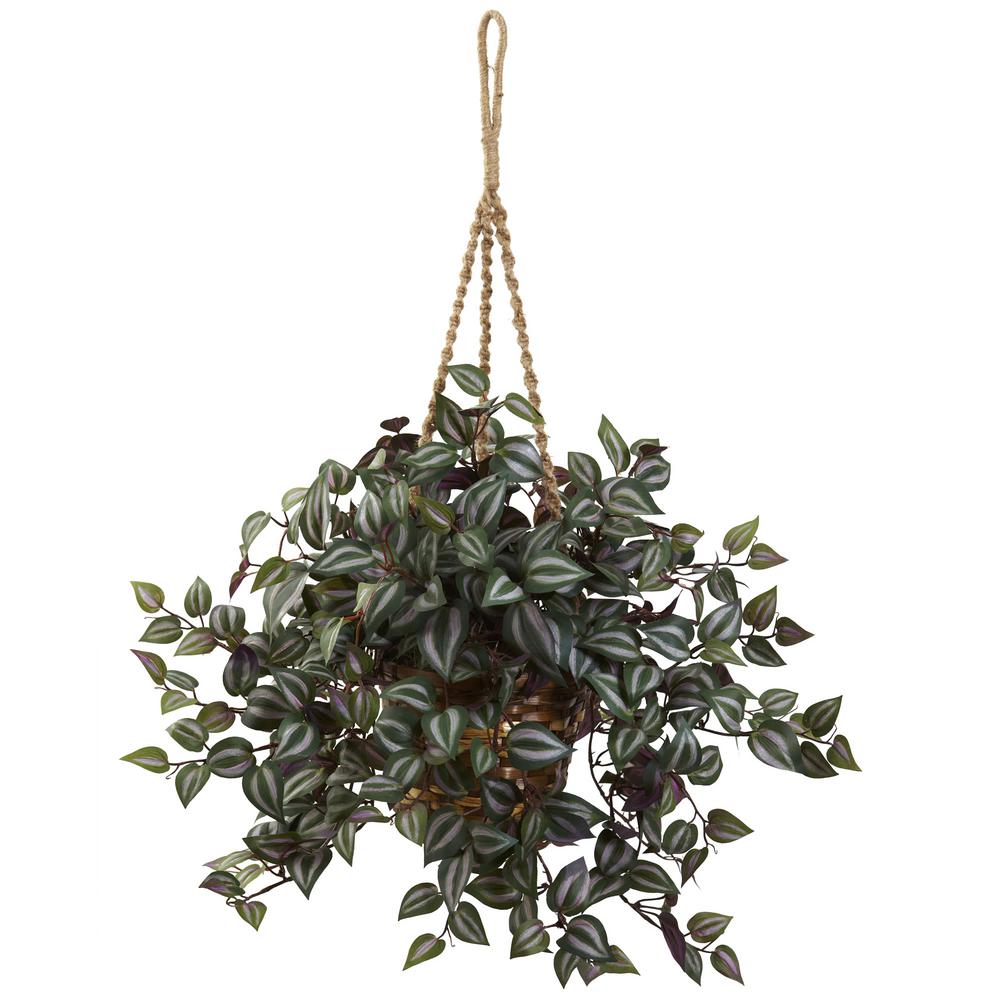 The term Wandering Jew comes from 13th Century Christian folklore. The character is a Jewish man who was said to have taunted Jesus before he was crucified. As punishment for his taunt, he was cursed to walk the Earth until the return of Christ. In some stories, his clothes and shoes never wear out and after 100 years, he returns to being a younger man. He was a perpetual traveler, unable to rest, but able to converse in all of the languages of the world. This is not based on any actual Biblical story, though it may have been inspired by the story of Caine and European paganism. Much like Big Foot or ghosts today, Europeans of the time believed that they had actually seen this character. For hundreds of year, even into the present day, this character has appeared in literature and art.
The term Wandering Jew comes from 13th Century Christian folklore. The character is a Jewish man who was said to have taunted Jesus before he was crucified. As punishment for his taunt, he was cursed to walk the Earth until the return of Christ. In some stories, his clothes and shoes never wear out and after 100 years, he returns to being a younger man. He was a perpetual traveler, unable to rest, but able to converse in all of the languages of the world. This is not based on any actual Biblical story, though it may have been inspired by the story of Caine and European paganism. Much like Big Foot or ghosts today, Europeans of the time believed that they had actually seen this character. For hundreds of year, even into the present day, this character has appeared in literature and art. 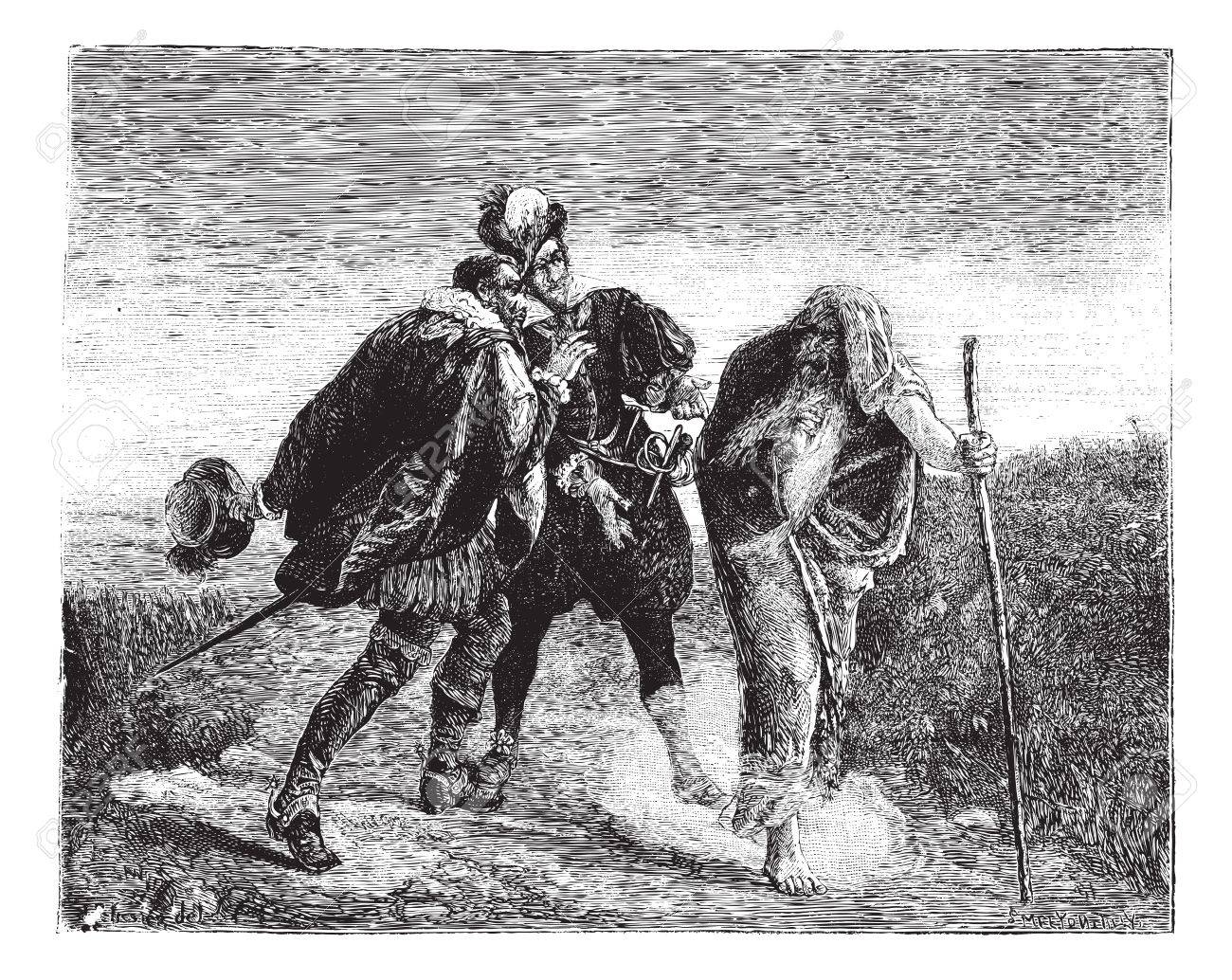

 African Americans came to the United States as slaves and were only allowed to grow a small selection of vegetables for themselves. Collards were one of them. While the vegetable is not African in origin, the methods of preparation were. West Africans use hundreds of species of leafy greens and prepare them in ways that maintain their high nutrient content. Enslaved Africans found fewer wild greens here and came to rely on collards, which were brought here by the British. (Depending upon where the slaves were taken from, they may have been familiar with leafy cabbages as in the Middle Ages, cabbages of various sorts were traded into Africa through Morocco and Mali). They are unique among cabbages in that they can continue to produce leaves over their growing season. They can be harvested for months when other vegetables quit in the cold weather. Collards helped slaves to survive due to their productivity. For this reason, poor white people also grew collards. It is a cheap, productive, healthy plant. Although white Southerners grew the plant, it was a marginal crop to European settlers and African Americans deserve credit for popularizing the use of greens and their preparation.
African Americans came to the United States as slaves and were only allowed to grow a small selection of vegetables for themselves. Collards were one of them. While the vegetable is not African in origin, the methods of preparation were. West Africans use hundreds of species of leafy greens and prepare them in ways that maintain their high nutrient content. Enslaved Africans found fewer wild greens here and came to rely on collards, which were brought here by the British. (Depending upon where the slaves were taken from, they may have been familiar with leafy cabbages as in the Middle Ages, cabbages of various sorts were traded into Africa through Morocco and Mali). They are unique among cabbages in that they can continue to produce leaves over their growing season. They can be harvested for months when other vegetables quit in the cold weather. Collards helped slaves to survive due to their productivity. For this reason, poor white people also grew collards. It is a cheap, productive, healthy plant. Although white Southerners grew the plant, it was a marginal crop to European settlers and African Americans deserve credit for popularizing the use of greens and their preparation. 
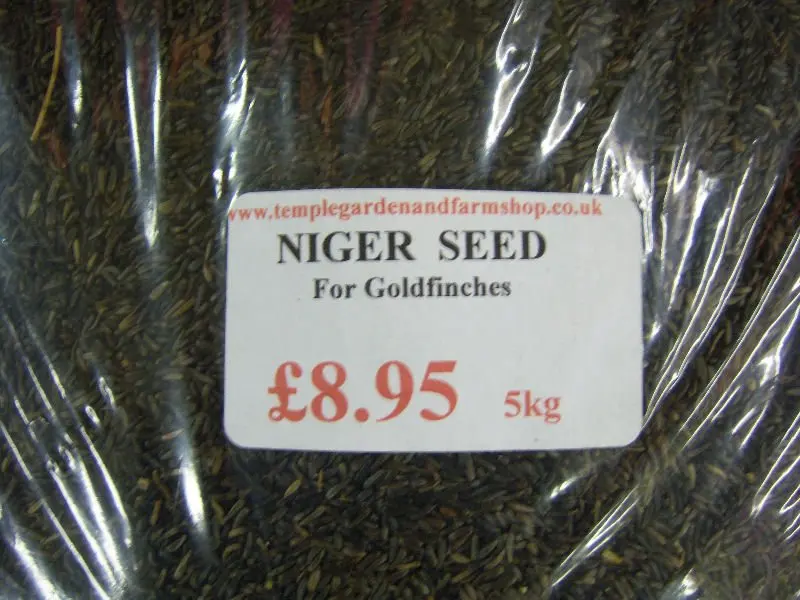 While the name might suggest that the seed came from Nigeria or Niger, nyjer seed actually comes from the Guizotia abyssinica plant which grows in the highlands of Ethiopia. I found a reference to the seed being called Nigerian thistle, which to me indicates that whomever named the seed must have had some confusion about the geography of Africa or, perhaps generically called it “niger” seed as a stand in for Africa itself. Nigeria, Niger, and the Niger River are all located in West Africa whereas Ethiopia is in East Africa. The genus Guizotia contains six species, of which five are native to Ethiopia. A distribution map of the species shows that it grows naturally in some areas of Uganda, Malawi, Ethiopia, Zimbabwe, Tanzania, Democratic Republic of Congo, and Sudan. It also grows in India, Bhutan, Bangladesh, and Nepal. The plants found in and around India are believed to have been brought there long ago by Ethiopian migrants, who also brought millet to the region. Therefore, Nyger seed really has nothing to do with the countries of its (former) namesake and represents a sort of “imagined Africa” rather than any geographical or botanical reality.
While the name might suggest that the seed came from Nigeria or Niger, nyjer seed actually comes from the Guizotia abyssinica plant which grows in the highlands of Ethiopia. I found a reference to the seed being called Nigerian thistle, which to me indicates that whomever named the seed must have had some confusion about the geography of Africa or, perhaps generically called it “niger” seed as a stand in for Africa itself. Nigeria, Niger, and the Niger River are all located in West Africa whereas Ethiopia is in East Africa. The genus Guizotia contains six species, of which five are native to Ethiopia. A distribution map of the species shows that it grows naturally in some areas of Uganda, Malawi, Ethiopia, Zimbabwe, Tanzania, Democratic Republic of Congo, and Sudan. It also grows in India, Bhutan, Bangladesh, and Nepal. The plants found in and around India are believed to have been brought there long ago by Ethiopian migrants, who also brought millet to the region. Therefore, Nyger seed really has nothing to do with the countries of its (former) namesake and represents a sort of “imagined Africa” rather than any geographical or botanical reality. 
